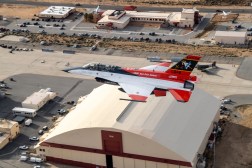AI-enabled architectures key to effective cybersecurity posture, Air Force IT leader says

With organizations across the Pentagon looking to shore up cybersecurity, the Department of the Air Force’s deputy chief information officer said Tuesday that the ability to defend against attacks to the network will hinge on more modern system architectures that have artificial intelligence capabilities baked in from the start.
“The single biggest thing we can do to improve our cybersecurity is modernize architectures [and] get rid of our tech debt, because our older systems … can’t provide the cybersecurity that we need to survive in today’s environment,” Winston Beauchamp said during a panel at the Google Public Sector Forum hosted by Scoop News Group.
Beauchamp noted that U.S. adversaries are already leveraging advanced capabilities like AI to enhance their cybersecurity attacks. For example, artificial intelligence tools can be used to bypass the Air Force’s signature management techniques — where a military asset can be deliberately modified to reduce the likelihood of detection — to rapidly alter an adversary’s signature just enough so that they go undetected on the spectrum, he noted.
“They can do so at speed, faster than we can update our signatures — so we have to run faster,” Beauchamp said. “And that means using AI to try a different approach other than signature management.”
The department is working to integrate both AI and cybersecurity protections across the architectures of its new systems as they’re being developed, Beauchamp noted. This pivots from legacy platforms that instead had these capabilities tacked onto the architectures either at the end of development or after deployment, which limits their effectiveness, he said.
Taking this approach to modernization is a journey that Beauchamp is “very optimistic” about.
“When you modernize, you bring in capabilities that — when cybersecurity and artificial intelligence are baked in — are inherent to what we’re delivering,” he said. “Then the nice thing about it is from an infrastructure perspective, we don’t have to think about designing it. It comes out of the box and we will tailor it and we’ll customize it to the mission.”






